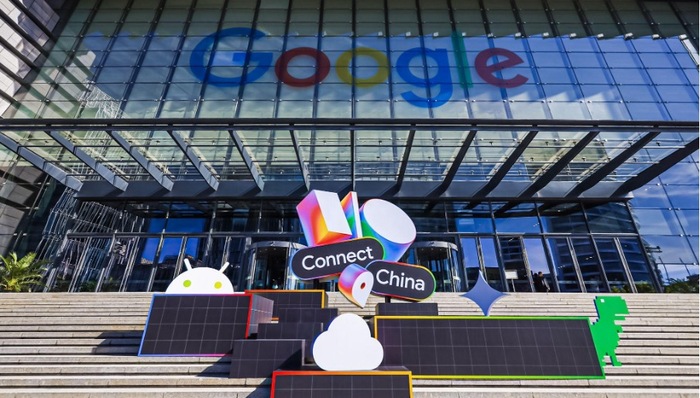
Read More《中国开发者已成为谷歌全球AI生态中的关键力量》
Positive Comments: Chinese Developers are Remodeling the Global Innovation Ecosystem with an “Instrumental” AI Mindset
At the Google Developer Conference in 2025, “Chinese developers” became a frequently mentioned keyword. From the public speeches of Google executives to the presentation of specific cases, the role of Chinese teams in the global AI ecosystem has been upgraded from “participants” to “key players.” This transformation not only reflects the improvement of the capabilities of the Chinese developer community but also reveals a new innovation paradigm under the resonance of AI technology and global demands.
Firstly, Chinese developers’ “instrumental” understanding of AI and “problem – oriented” thinking are breaking down technological barriers and promoting the transformation of AI from a “black box” to a “general – purpose ability.” As mentioned in the news, the new generation of Chinese teams no longer regards AI as a high – threshold “black technology” but actively integrates it into the entire process of products and services. This change in mindset is of far – reaching significance. On the one hand, it lowers the psychological threshold for AI applications, enabling small and medium – sized developers to quickly access AI capabilities through model tools such as Gemini 2.5 and Gemma provided by Google to solve practical problems (such as personalized recommendation and material generation). On the other hand, the “instrumental” thinking promotes the in – depth integration of AI with business scenarios. For example, in the overseas expansion of the short drama track, Chinese developers optimize local narratives and user experiences through AI, transforming technology into direct market competitiveness. This practical attitude of “using technology for our own purposes” is the key driving force for the current global AI applications to shift from “showing off skills” to “achieving practical results.”
Secondly, the “global vision” and “overseas practices” of Chinese developers are providing new models for global innovation. From the 14 awards won by 12 Chinese teams on the Google Play Annual Best list to the implementation of Chinese – originated tracks such as short dramas and live – streaming e – commerce in markets like Japan and the United States, Chinese developers have changed from “followers” to “model exporters.” Behind this transformation is the product strength tempered by the “intense competition” in the Chinese Internet market. The high requirements of domestic users for experience force teams to accumulate rich experience in areas such as personalized recommendation and local operation. The expansion into overseas markets allows these experiences to collide with global demands, giving rise to new product forms. For example, the success of short dramas overseas depends not only on AI’s accurate capture of user preferences (such as generating materials suitable for different cultures through tools like Lyria and Imagen 4) but also on Chinese teams’ profound understanding of the trend of “fast – paced” content consumption. This model of “Chinese experience + global adaptation” is becoming an example for global developers to learn from.
Finally, the “ecological synergy” between Google and Chinese developers has formed a positive cycle of mutual empowerment. Google has lowered the technological threshold for Chinese developers by opening up tool chains such as the Gemini series of models, the “autonomous agent” mode of Firebase Studio, and the AI assistant embedded in Chrome developer tools. In turn, the innovative practices of Chinese teams in areas such as short dramas and games provide Google with rich application scenario feedback, promoting the iterative optimization of its tool chain (such as upgrading multi – modal processing capabilities according to local needs). In addition, Google’s “Google Developer Program” and “Overseas Accelerator” projects, through skill certification and resource push, further reduce the overseas expansion costs of small and medium – sized developers. This ecological cooperation of “technical support + scenario feedback” not only accelerates the globalization process of Chinese developers but also consolidates Google’s leading position in the AI developer ecosystem.
Negative Comments: Chinese Developers Still Need to Overcome Multiple Challenges in the Global AI Ecosystem
Although the status of Chinese developers in the Google ecosystem has been significantly improved, their globalization path is not smooth. From technological dependence to localization traps, from intensified competition to compliance risks, multiple challenges need to be carefully addressed.
Firstly, the dependence on external AI tools may weaken long – term technological autonomy. Currently, Chinese developers’ AI applications highly rely on the models (such as Gemini 2.5) and tool chains (such as Firebase Studio) provided by Google. Although this “ready – to – use” model can quickly improve efficiency, it may also lead to the “hollowing out” of technological capabilities. For example, if Google adjusts its model interfaces or pricing strategies in the future, some developers who are overly dependent on its tools may face a sudden increase in costs or limited functions. More importantly, long – term dependence on external technologies may inhibit the cultivation of independent R & D capabilities. When AI becomes the core competitiveness of products, teams lacking the ability to optimize underlying models or innovate algorithms will find it difficult to build a differentiated competitive edge in global competition.
Secondly, the complexity of “strong localization” far exceeds what it seems on the surface, and cultural differences and user habits may become “invisible barriers.” As mentioned in the news, Google emphasizes that “strong localization” is not just about translation but also about deeply understanding social trends and cultural differences. However, in practice, Chinese developers’ localization attempts still have the problem of “similar in form but different in essence.” For example, in the overseas promotion of short dramas, although some teams have used AI to generate multilingual materials, they have failed to conduct in – depth research on local users’ content preferences (such as narrative rhythm and value expression), resulting in lower – than – expected user retention rates. Another example is the implementation of live – streaming e – commerce in the European and American markets, which requires a balance between “strong interaction” and “privacy protection” (such as users’ sensitivity to personal data collection). If AI – driven personalized recommendation overly relies on user behavior data, it may trigger compliance disputes. This contradiction between “technology can solve efficiency but is difficult to solve cultural cognition” is the core challenge of localization implementation.
Thirdly, the intensification of global market competition may compress profit margins, and the “super – ability” of AI may become an “accelerator of involution.” Sami Kizilbash mentioned that AI is a “super – ability” for small and medium – sized enterprises, but when more and more developers master this ability, the competitive advantage it brings may be quickly diluted. For example, in the overseas game market, AI – generated materials and personalized recommendation have become standard features. If teams only rely on these tools, it is difficult to form a unique user experience. The “AI – driven” short drama track may also lead to content homogenization. When all teams can use AI to quickly generate content that “matches the data model,” users may turn to more creative products due to aesthetic fatigue. In addition, under the dual pressures of rising customer acquisition costs and stricter privacy compliance, although AI can improve efficiency, it may also drive up R & D and operation costs (such as the purchase of compliance tools and investment in data processing). If the costs cannot be translated into an increase in users’ willingness to pay, the ROI of enterprises may not increase but decrease.
Fourthly, data compliance and privacy risks may become a “fatal shortcoming” in globalization. With the increasing emphasis on data security in various countries (such as the EU GDPR and the US CCPA), the collection, storage, and use of user data in AI applications are subject to strict supervision. During the overseas expansion process, if Chinese developers have insufficient understanding of local regulations (such as data localization storage requirements and user authorization processes), they may trigger compliance risks due to the “automatic data processing” function of AI tools. For example, if the Gemini assistant embedded in Chrome developer tools calls user behavior data without explicit authorization, it may lead to legal disputes. If the “autonomous agent” mode of Firebase Studio does not desensitize sensitive data (such as payment information), it may also violate local privacy laws. This conflict between “technological convenience” and “compliance requirements” requires developers to establish a comprehensive risk assessment mechanism before applying technology.
Advice for Entrepreneurs: Drive Global Competitiveness with a “Tool + Autonomy” Dual – Wheel Model
Facing the global AI ecosystem full of both opportunities and challenges, Chinese entrepreneurs need to optimize their strategies in the following four aspects to consolidate their advantages:
Balance tool dependence and independent R & D to build a “technological moat”:
Make good use of AI tools (such as Gemini models and Firebase Studio) provided by platforms like Google to quickly verify products, but at the same time, invest resources in cultivating independent technological capabilities. For example, for vertical scenarios (such as short drama content generation), secondary development can be carried out based on the lightweight Gemma model opened by Google to accumulate self – owned algorithm libraries. In the user data processing link, develop privacy computing tools that meet the needs of their own businesses to reduce dependence on external tools. In the long run, the dual – wheel model of “external tools for efficiency improvement + independent technological innovation” can ensure the sustainability of technological competitiveness.Deepen localization research and establish “cultural perception”:
Localization should not only rely on the “data – driven” approach of AI tools but also combine manual research and cultural insights. It is recommended that entrepreneurs form a local team (or cooperate with local institutions) before entering a new market. Through user interviews and cultural trend analysis (such as social media hotspots and popular culture), identify core needs. In product design, combine the “data conclusions” generated by AI with manual experience (such as adjusting the narrative rhythm of short dramas and the interaction rules of live – streaming e – commerce) to avoid the trap of “correct data but wrong experience.” For example, for the European and American markets, entrepreneurs can focus on researching users’ sensitive points regarding “privacy protection” and add a “manual adjustment of preferences” function to AI recommendation to enhance user trust.Focus on differentiated innovation and avoid “AI involution”:
AI is a tool for efficiency, not a competitive barrier. Entrepreneurs need to clarify their core advantages (such as content creativity and supply chain management) and combine AI capabilities with these advantages to form unique user value. For example, short drama teams can retain the control of “emotional resonance points” by human screenwriters while using AI to generate basic materials, creating content with “AI efficiency + human touch.” Game teams can use AI to optimize matching algorithms but improve user stickiness through self – designed “social gameplay.” The key to differentiation lies in “AI solves standardized problems, and humans solve personalized problems,” and neither can be neglected.Establish a pre – compliance mechanism to prevent data and privacy risks:
Before using AI tools, entrepreneurs need to conduct in – depth research on the compliance requirements of the target market (such as data localization and user authorization) and embed compliance requirements into the technology development process. For example, set up “data access permission levels” in Firebase Studio to restrict the access of AI tools to sensitive data. Clearly define the data usage scope of AI functions in the user agreement and provide a “one – click turn – off” option. In addition, entrepreneurs can make use of the compliance support provided by platforms like Google (such as local policy interpretation) and conduct regular compliance audits to avoid ignoring legal risks due to technological convenience.
Conclusion: The rise of Chinese developers in the Google AI ecosystem is the result of the combined effects of technological capabilities, market experience, and global vision. In the future, only by finding a balance between “tool application” and “independent innovation,” “efficiency improvement” and “compliance security,” and “data – driven” and “cultural insight” can Chinese developers truly upgrade from “key players” to “leading players.”
- Startup Commentary”The Incomplete Evolution History of Bathing Centers”
- Startup Commentary”Starting from 358,800 yuan, Maserati Slashes Prices Drastically to Survive”
- Startup Commentary”Monopoly: Always the Best Business”
- Startup Commentary”A PE Giant Spent $6.6 Billion on a Crematorium”
- Startup Commentary”In a Low-Sports Year, Social Assets Still Hold Great Value”




